Abstract
OBJECTIVE: We examine the relationship between health insurance status and access to care among low-income persons 65 years of age and under, taking into account their social demographic characteristics and health care needs. DATA SOURCES AND STUDY SETTING. Study groups consist of the subsamples of persons with incomes between 100 and 150 percent of the federal poverty level and those below the federal poverty level interviewed in the 1983, 1984, and 1986 Health Interview Surveys (HIS) of the National Center for Health Statistics. Sample sizes range from about 6,000 to 11,000 depending on the proportion of each study group administered the insurance supplement. STUDY DESIGN. Annual visits and whether hospitalized during a year are used as measures of access to medical care. The analysis consists of identifying predictors of use of services (i.e., health status and social characteristics) and, taking them into account, examining the relationship of insurance status to access to care. This was first undertaken on the 1983 survey; the models obtained then are replicated on the other two years of data. DATA COLLECTION/EXTRACTION METHODS. The HIS utilizes in-person interviews to gather health and medical history information from a stratified random sample of the U.S. population. Data were obtained through public use tapes distributed by the National Center for Health Statistics. PRINCIPAL FINDINGS. Results are consistent for all three years among persons in poverty. Being covered by Medicaid, in contrast to having private insurance or being without health insurance, is related to use of both ambulatory care and hospital care. The access differences for persons in poverty, regardless of their vulnerability or "risk" of requiring medical care, are marked and generally statistically significant. Among the near-poor the same findings occur, although the differences are less sharp and less often statistically significant. CONCLUSIONS. The most obvious explanation is that the poor, and to a considerable extent the near-poor, have limited access because of copayments and deductibles that are typically part of private insurance coverage. The findings raise policy questions regarding the utility of either "play or pay" employer-provided insurance or income tax deductions to increase access.
Full text
PDF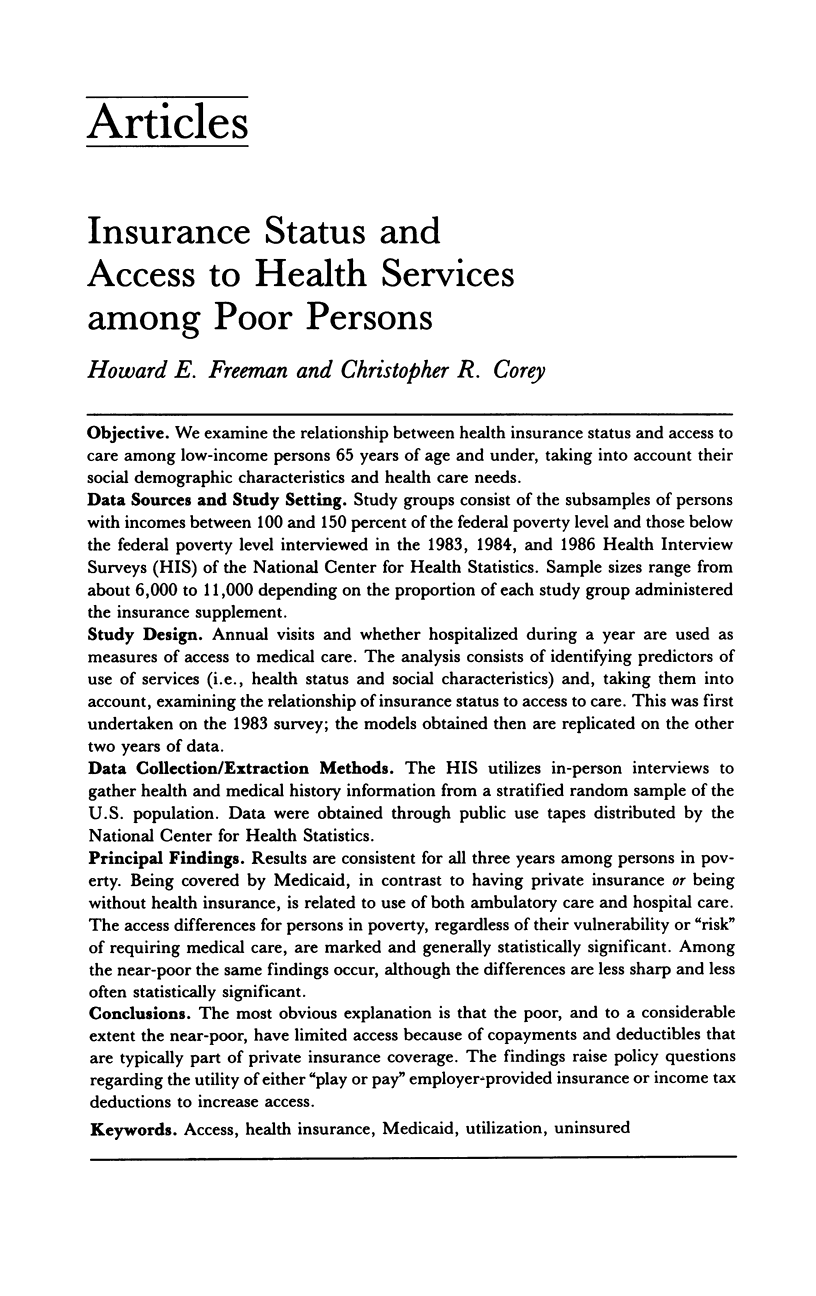
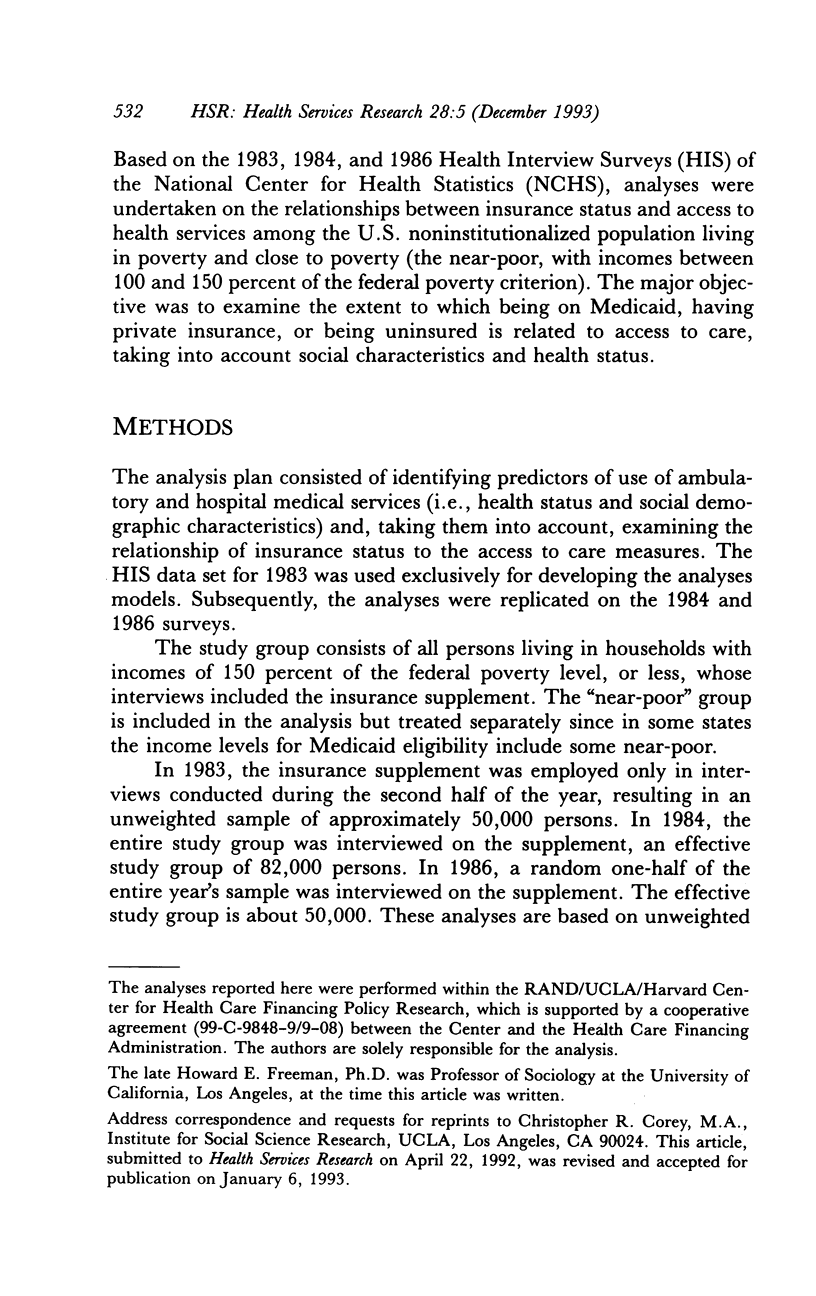
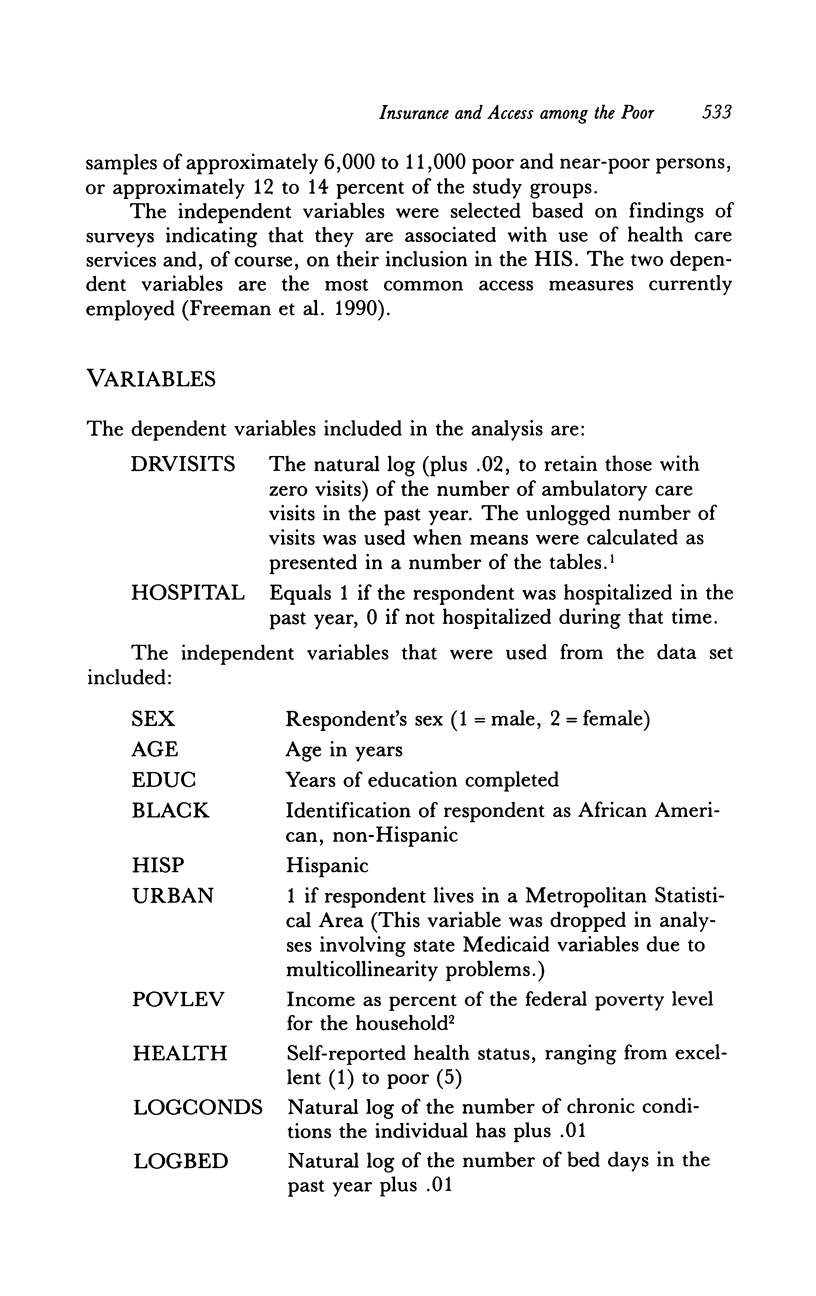
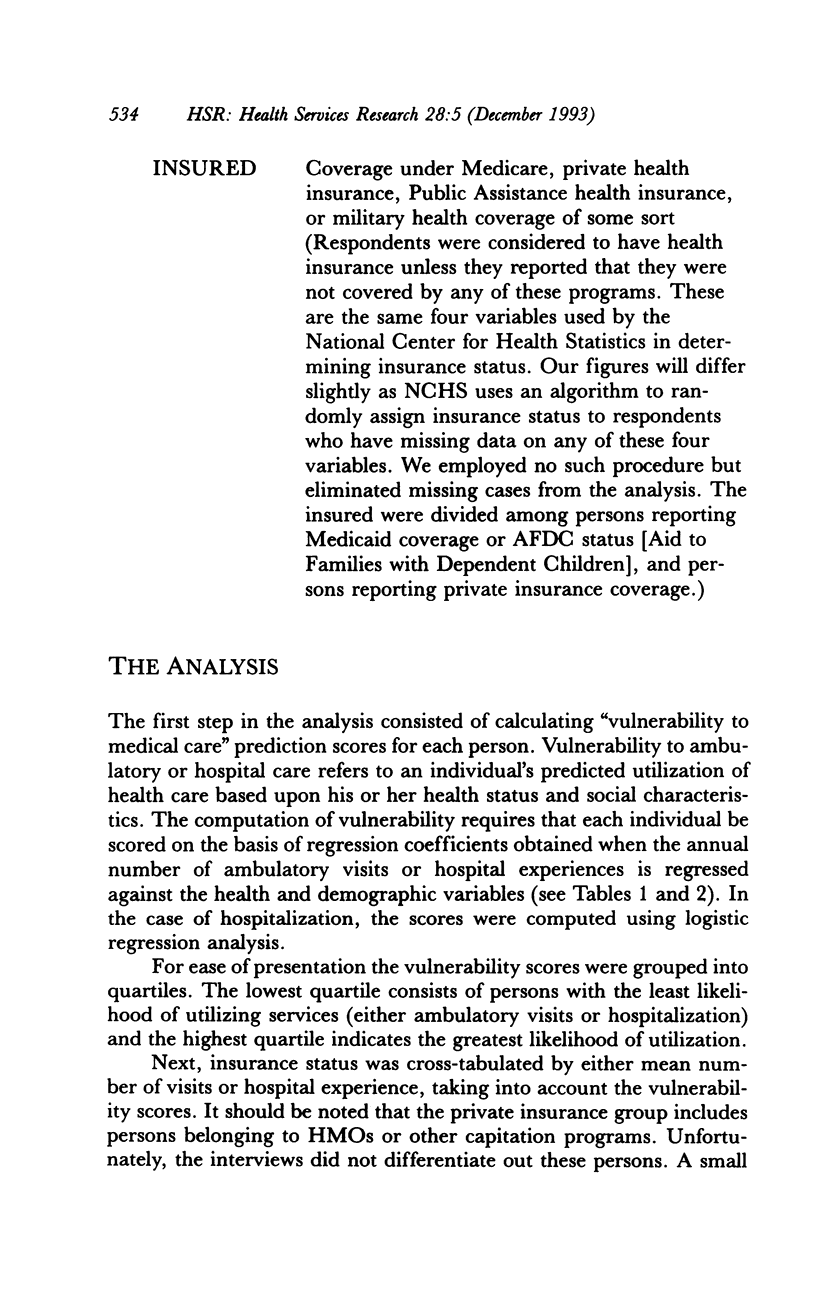
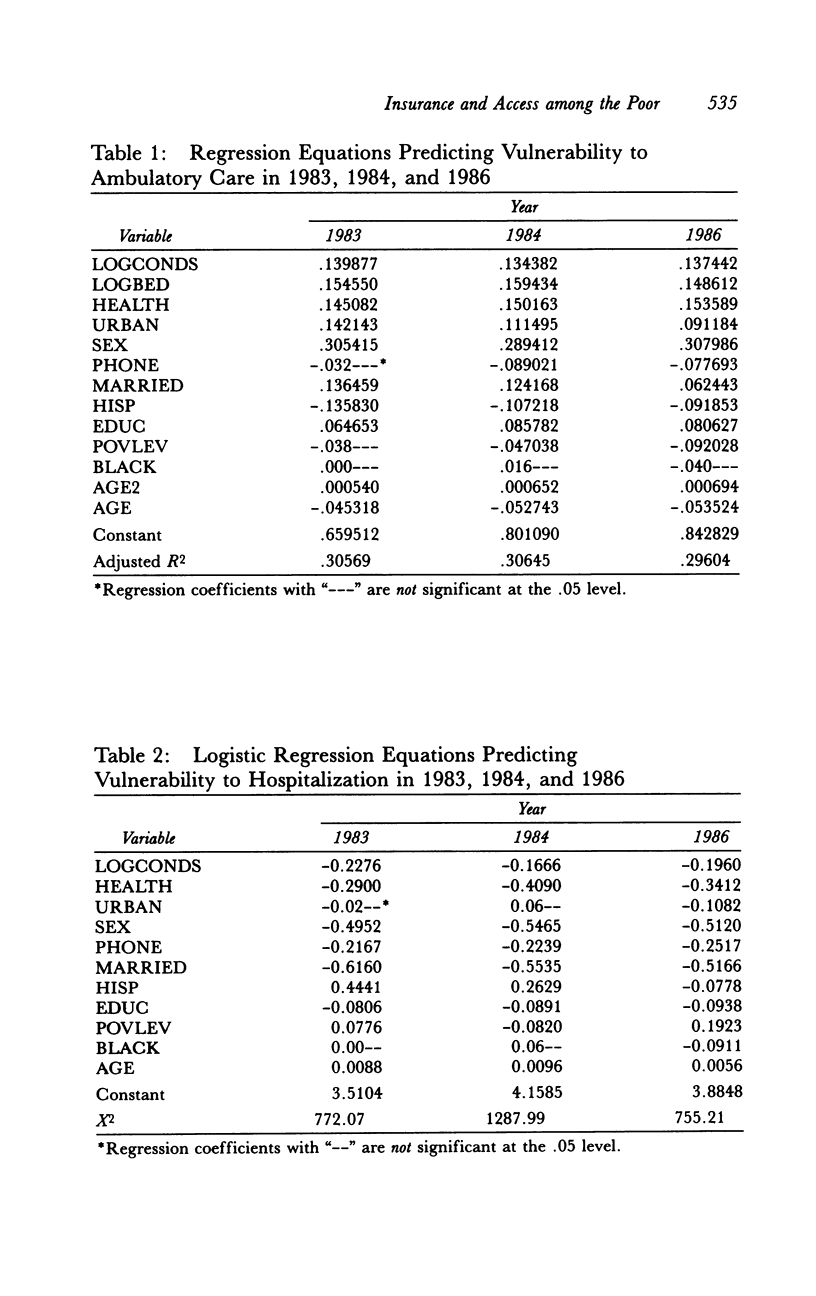
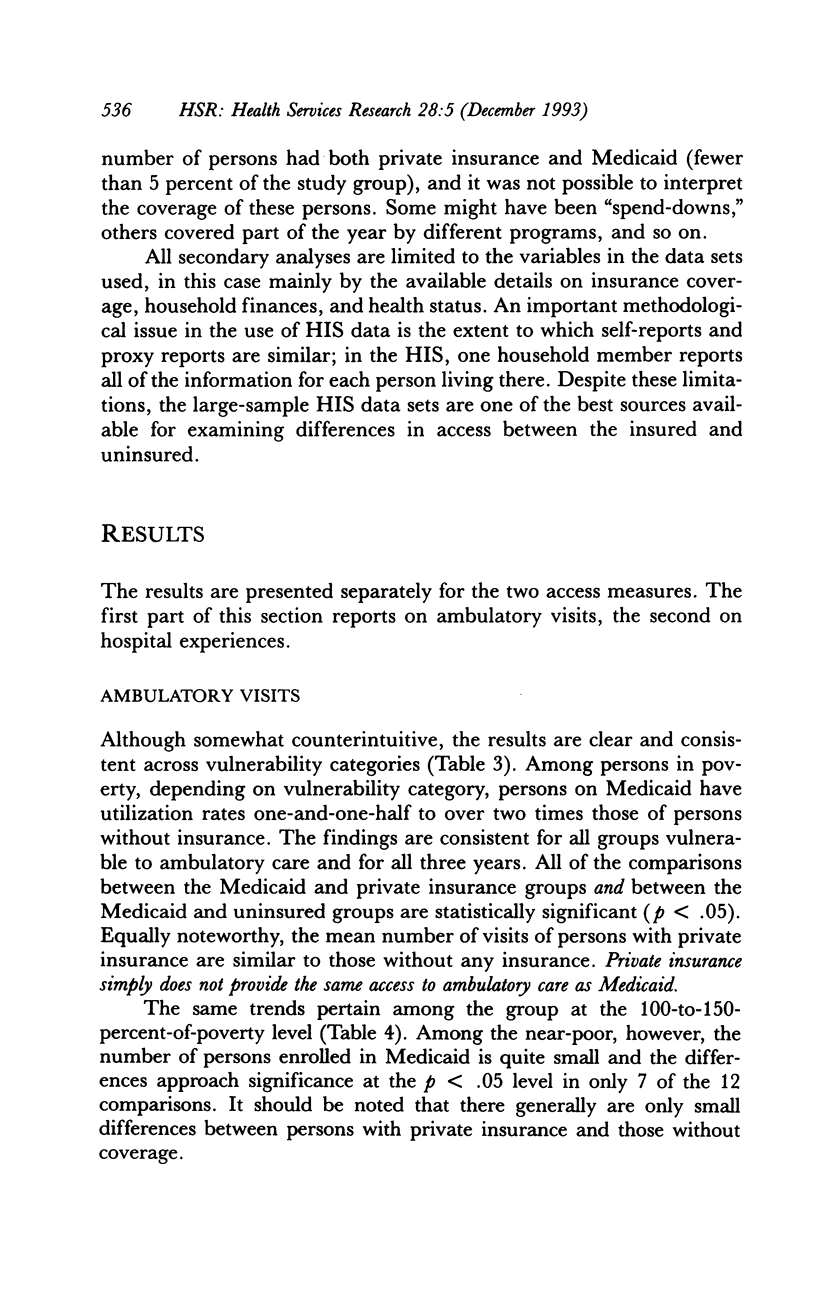
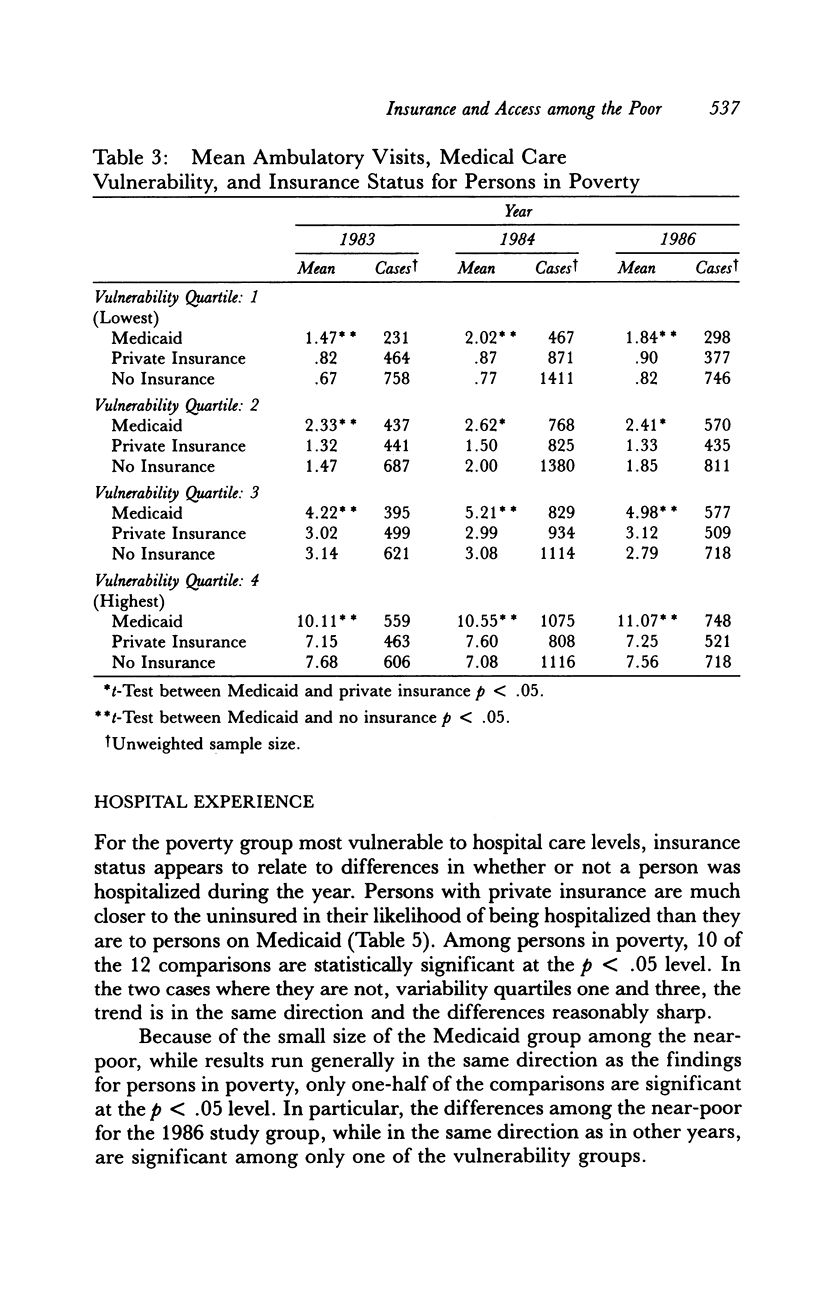
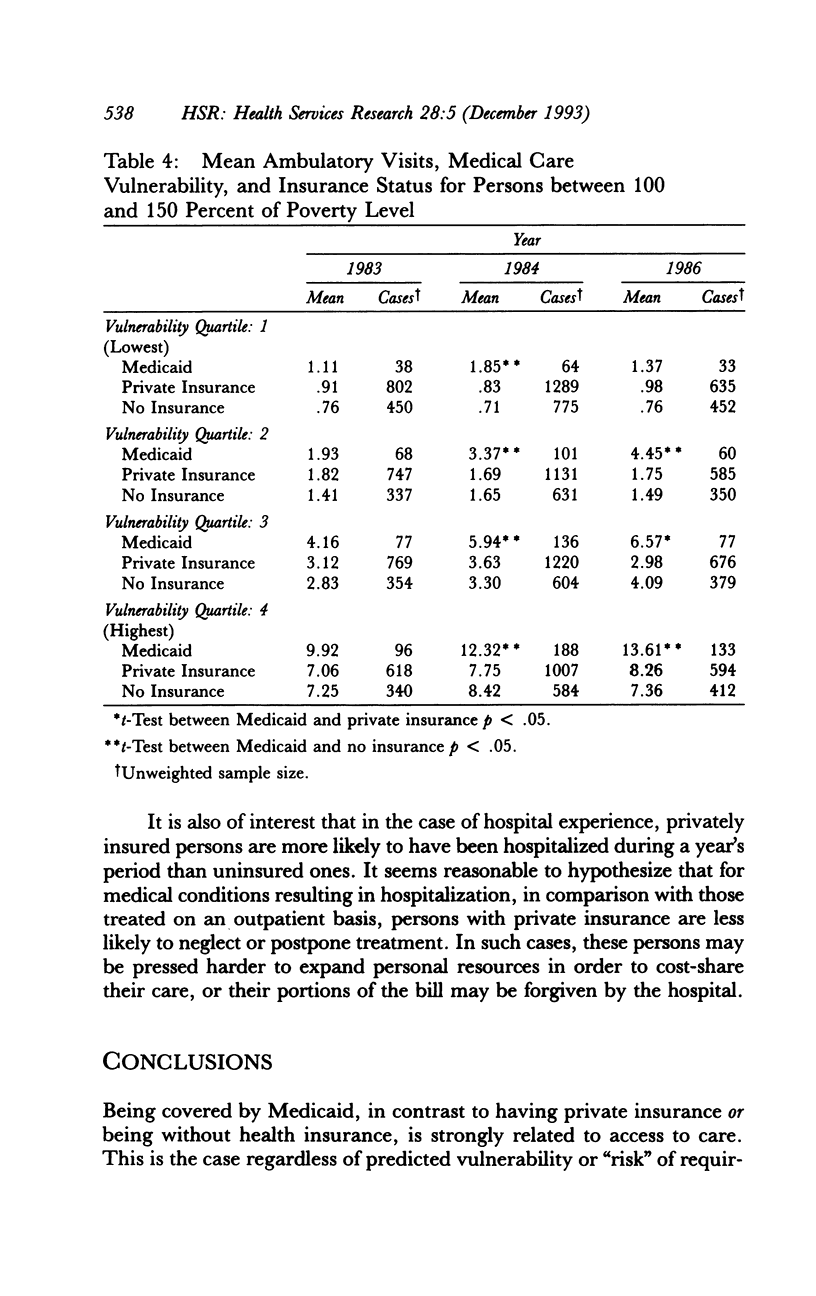
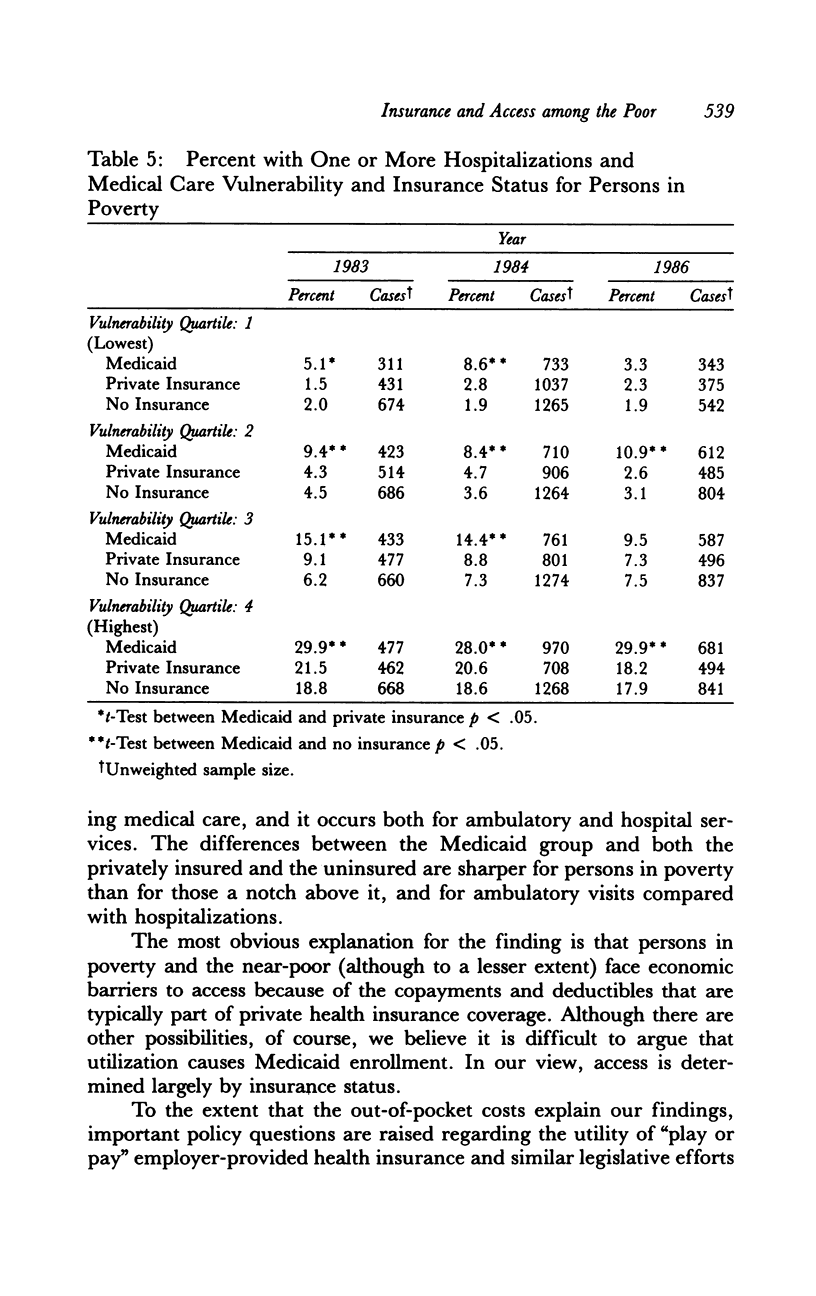
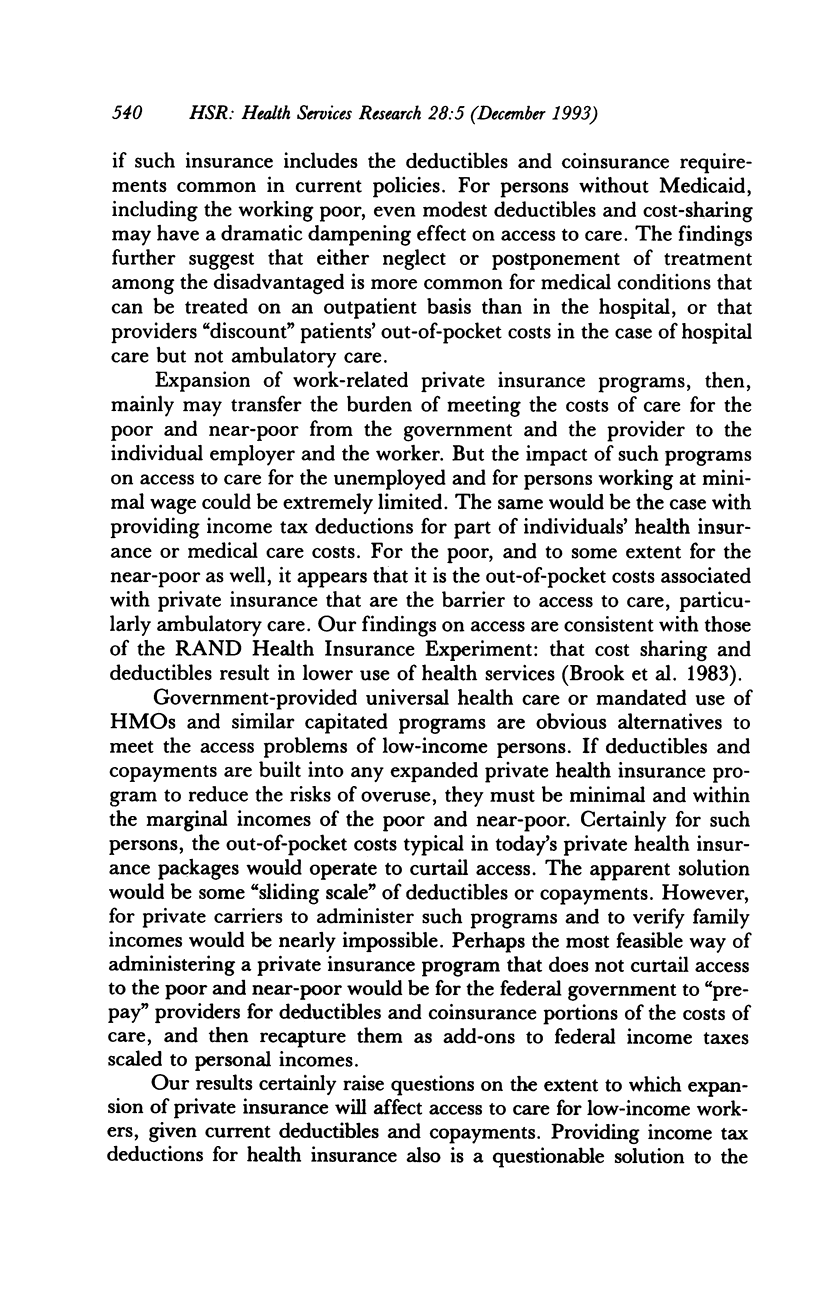
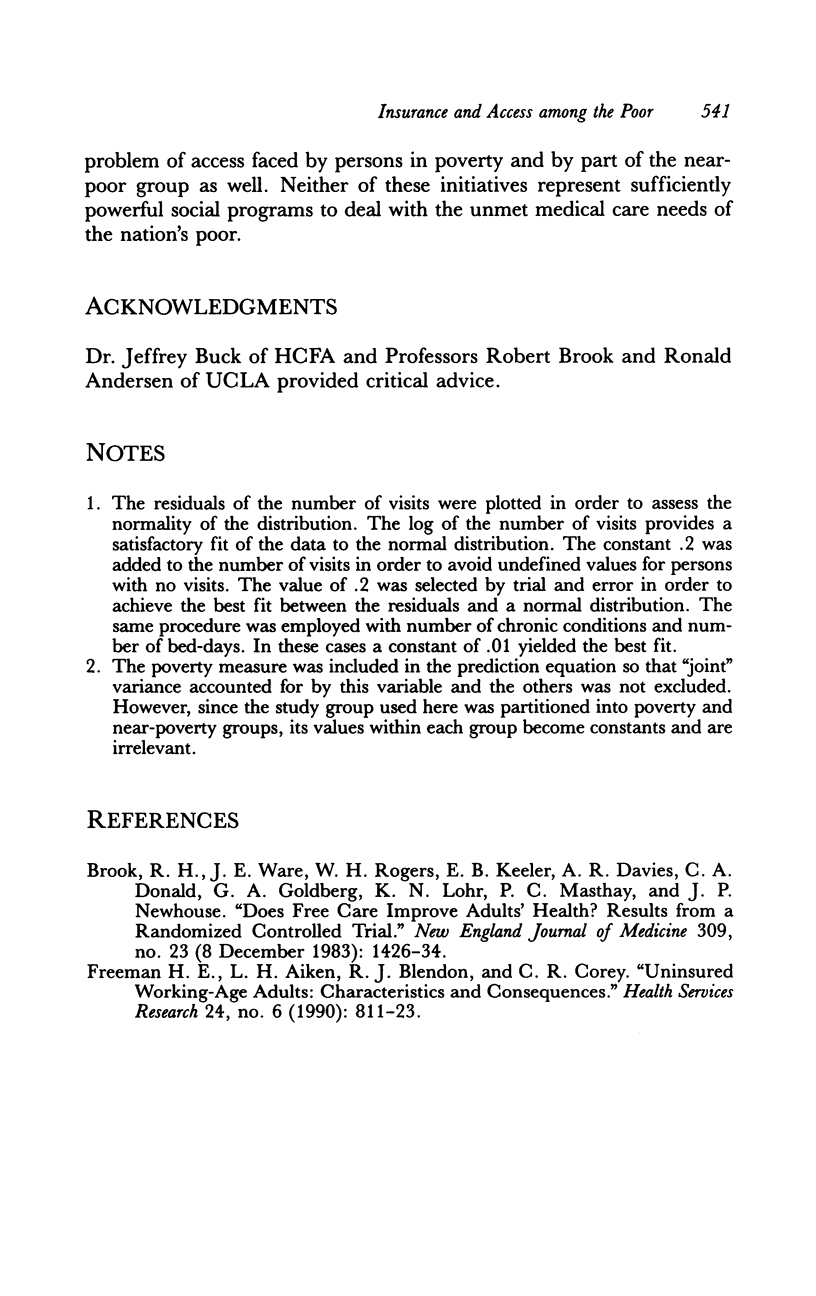
Selected References
These references are in PubMed. This may not be the complete list of references from this article.
- Brook R. H., Ware J. E., Jr, Rogers W. H., Keeler E. B., Davies A. R., Donald C. A., Goldberg G. A., Lohr K. N., Masthay P. C., Newhouse J. P. Does free care improve adults' health? Results from a randomized controlled trial. N Engl J Med. 1983 Dec 8;309(23):1426–1434. doi: 10.1056/NEJM198312083092305. [DOI] [PubMed] [Google Scholar]
- Freeman H. E., Aiken L. H., Blendon R. J., Corey C. R. Uninsured working-age adults: characteristics and consequences. Health Serv Res. 1990 Feb;24(6):811–823. [PMC free article] [PubMed] [Google Scholar]


